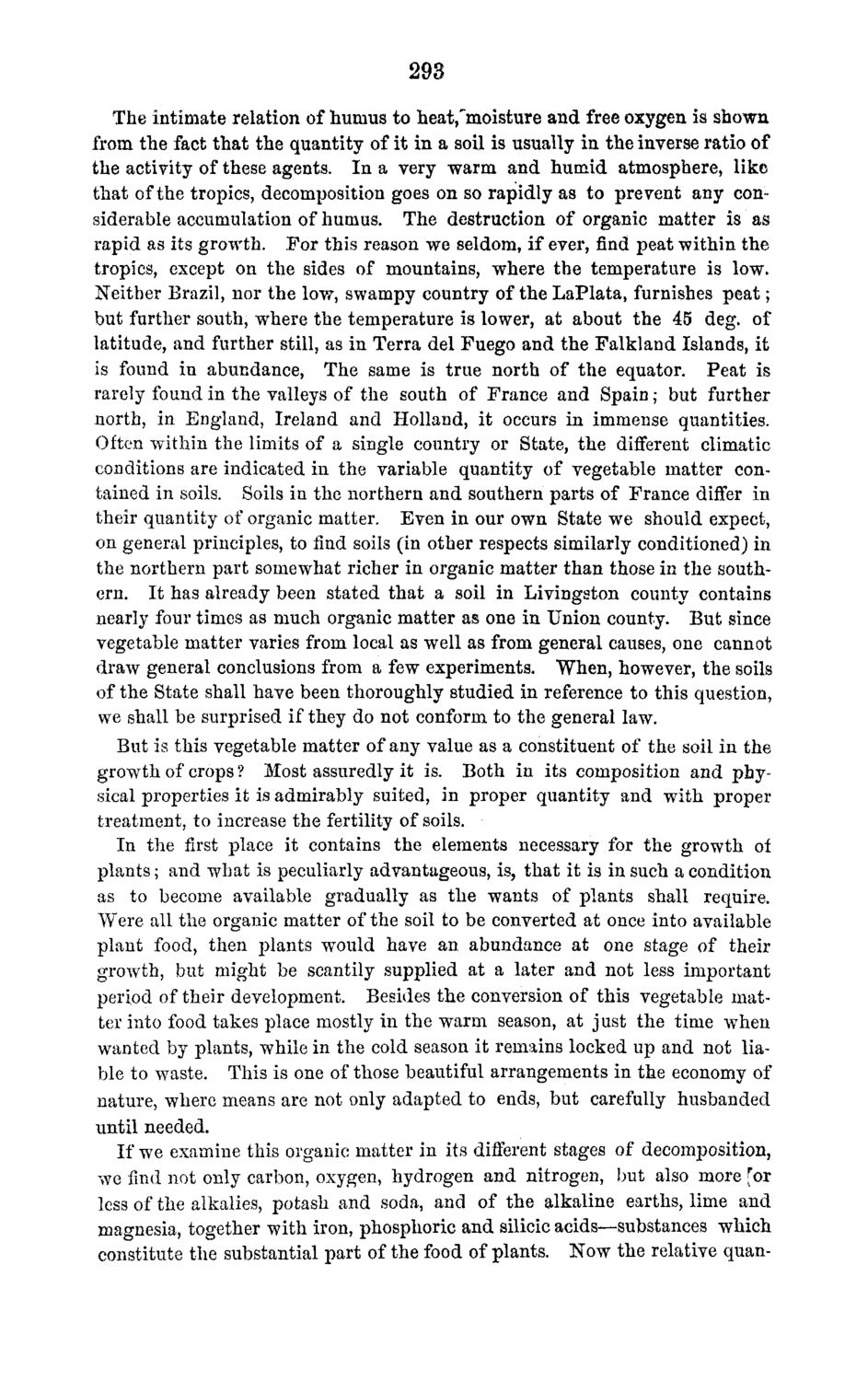| |
| |
Caption: Board of Trustees Minutes - 1870
This is a reduced-resolution page image for fast online browsing.

EXTRACTED TEXT FROM PAGE:
293 The intimate relation of humus to heat^moisture and free oxygen is shown from the fact that the quantity of it in a soil is usually in the inverse ratio of the activity of these agents. In a very warm and humid atmosphere, like that of the tropics, decomposition goes on so rapidly as to prevent any considerable accumulation of humus. The destruction of organic matter is as rapid as its growth. For this reason we seldom, if ever, find peat within the tropics, except on the sides of mountains, where the temperature is low* Neither Brazil, nor the low, swampy country of the LaPlata, furnishes peat; but further south, where the temperature is lower, at about the 45 deg. of latitude, and further still, as in Terra del Puego and the Falkland Islands, it is found in abundance, The same is true north of the equator. Peat is rarely found in the valleys of the south of France and Spain; but further north, in England, Ireland and Holland, it occurs in immense quantities. Often within the limits of a single country or State, the different climatic conditions are indicated in the variable quantity of vegetable matter contained in soils. Soils in the northern and southern parts of France differ in their quantity of organic matter. Even in our own State we should expect, on general principles, to find soils (in other respects similarly conditioned) in the northern part somewhat richer in organic matter than those in the southern. It has already been stated that a soil in Livingston county contains nearly four times as much organic matter as one in Union county. But since vegetable matter varies from local as well as from general causes, one cannot draw general conclusions from a few experiments. When, however, the soils of the State shall have been thoroughly studied in reference to this question, we shall be surprised if they do not conform to the general law. But is this vegetable matter of any value as a constituent of the soil in the growth of crops ? Most assuredly it is. Both in its composition and physical properties it is admirably suited, in proper quantity and with proper treatment, to increase the fertility of soils. In the first place it contains the elements necessary for the growth of plants; and what is peculiarly advantageous, is, that it is in such a condition as to become available gradually as the wants of plants shall require. Were all the organic matter of the soil to be converted at once into available plant food, then plants would have an abundance at one stage of their growth, but might be scantily supplied at a later and not less important period of their development. Besides the conversion of this vegetable matter into food takes place mostly in the warm season, at just the time when wanted by plants, while in the cold season it remains locked up and not liable to waste. This is one of those beautiful arrangements in the economy of nature, where means are not only adapted to ends, but carefully husbanded until needed. If we examine this organic matter in its different stages of decomposition, we find not only carbon, oxygen, hydrogen and nitrogen, but also more [or less of the alkalies, potash and soda, and of the alkaline earths, lime and magnesia, together with iron, phosphoric and silicic acids—substances which constitute the substantial part of the food of plants. Now the relative quan-
| |